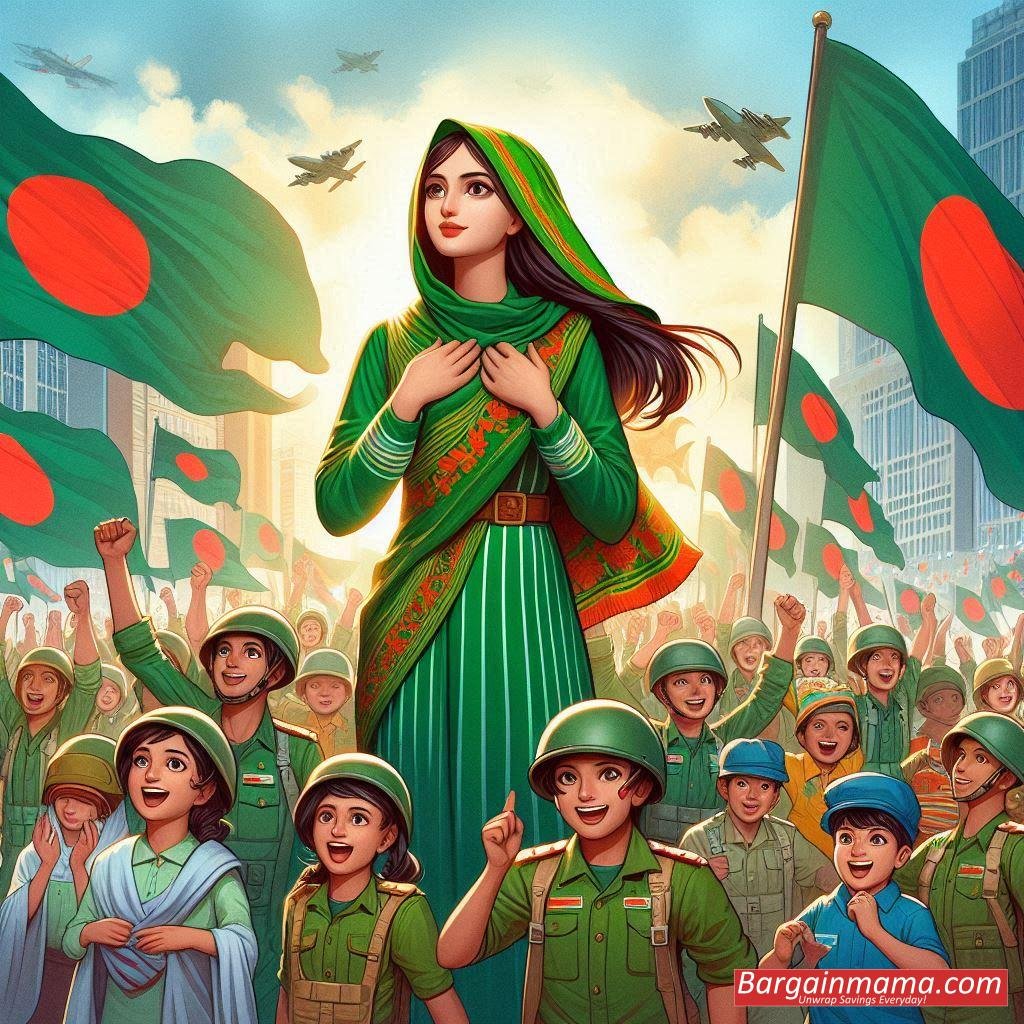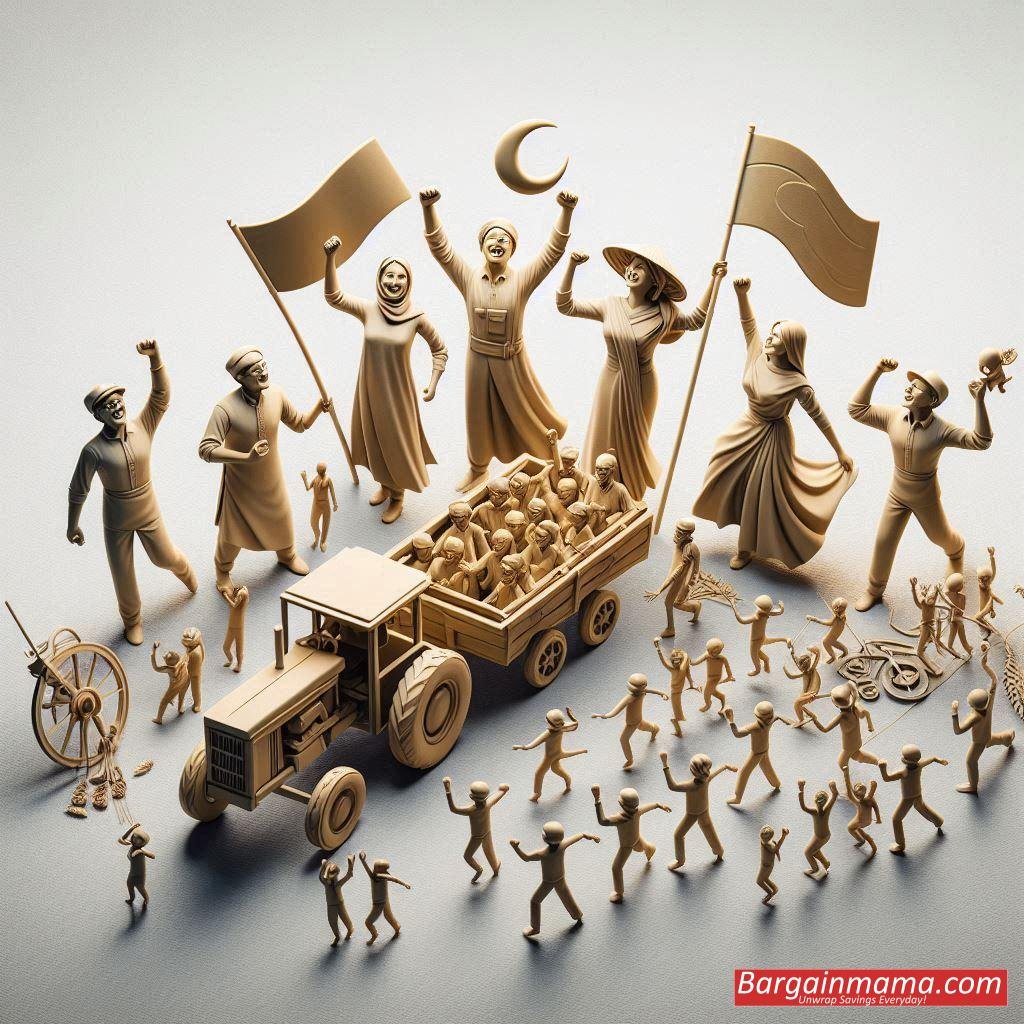Bangladesh has been engulfed in massive protests that have resulted in deadly bloodshed as conflicts between students, supporters of the government, and armed police grow. Numerous people have died and hundreds have been injured as a result of the turmoil, which was sparked by resentment over a contentious public service employment quota system. In the capital city of Dhaka and other locations, protesters brandishing sticks have occupied the streets and university campuses. Riot police have responded by using tear gas and rubber bullets against them.

The Protests’ Historical Context
The quota system implemented by the government, which reserves more than half of civil service positions for particular groups—including 30% for the family of veterans who participated in Bangladesh’s 1971 war of independence from Pakistan—is what sparked the protests. Many modern political leaders, including Prime Minister Sheikh Hasina, are descended from the generation that experienced this conflict, which is considered a turning point in the history of the country. Protesters argue that the restricted posts are biased towards supporters of the ruling Awami League party and discriminatory since they provide job security and higher salary. They want hiring to be done on the basis of merit.
The Protesters’ Scope
Beginning on July 1 at Dhaka University, the protests swiftly expanded across the country, involving regular street assemblies as well as blockades of trains and roads. On July 15, when members of the ruling party’s student wing, the Bangladesh Chhatra League, allegedly beat student protestors, the rallies turned violent. Since then, there have been further violent altercations involving security personnel, demonstrators, and officials, leading to the deployment of the paramilitary Rapid Action Battalion.
The Violence and the Reaction of the Government
Student protesters burn state broadcaster Bangladesh Television (BTV) on fire, resulting in a statewide closure. In an effort to put an end to the turmoil, the administration has implemented a curfew, suspended internet and mobile service, closed colleges and universities, and sent in security personnel. Human rights organizations have charged that police have used illegal force against demonstrators.

Officials hope that the Supreme Court of Bangladesh’s decision to reverse the majority of the contentious government employment quotas will lead to a return to normalcy. The court mandated that 93% of government positions be awarded to candidates based solely on merit, with 5% going to liberation fighters and their families, 1% going to members of ethnic minorities, and 1% going to people who identify as third gender or who are physically challenged.
The Anger’s Fundamental Causes
High rates of unemployment have fueled the ire, particularly among youth. Under Hasina, the economy grew rapidly, but in the post-pandemic period, it has slowed down and urban inequality has increased. Over 30 million of the 170 million individuals in the country do not have a job or a formal education. Following similar protests in 2018, the quota system was eliminated; but, in June, the High Court reinstated it, declaring its removal to be unconstitutional. The quotas were put on hold by the Supreme Court for a month as it considered the issue.
A politically connected elite by birth is said to benefit from the quota system, which critics claim produces a two-tier society. Many people think that although the quota made sense in the past, it is now being used as a tool for discrimination and cultural propaganda in order to keep its hold on the nation.
Global Reactions and Escalation
Student demonstrators have been hurt as riot police have used tear gas and rubber bullets. After earlier attempts to limit social media and mobile data services, internet monitoring site NetBlocks reported a nearly complete nationwide internet shutdown. The administration has asked protestors to wait for the Supreme Court’s decision and declared that a legal probe into the killings will take place.
Since the primary opposition party boycotted the January elections, which Prime Minister Hasina won her fourth consecutive term, the protests have posed the largest threat to her. By allegedly referring to demonstrators as “razakar,” an insulting name for people who are said to have worked with the Pakistani army during the country’s 1971 independence war, Hasina has come under fire for supposedly inciting resentment.
Student protestors have stated that their protests are now targeted at Hasina and her government, which is believed to be moving toward a one-party system, rather than just the quota system. The movement, according to protestors, is a struggle against an authoritarian government, and the current disturbances are a reflection of a larger discontent with Hasina’s leadership.

Worldwide Responses
Protests by Bangladeshi students have taken place in many places across the world, such as Copenhagen, Sydney, New York, and Melbourne. Concerned by the violence, the US State Department has underlined the value of peaceful assembly and freedom of speech. Antonio Guterres, the secretary-general of the UN, has urged everyone to exercise moderation and urged the authorities to look into any violent incidents.
Although the Supreme Court’s decision to repeal the quota system may provide some respite, the larger problems of inequality and unemployment still exist. Tensions between a young, expanding population and a government finding it difficult to meet their aspirations are shown by the situation in Bangladesh. The world community is nonetheless keeping a careful eye on the nation as it moves through this serious moment of instability.



